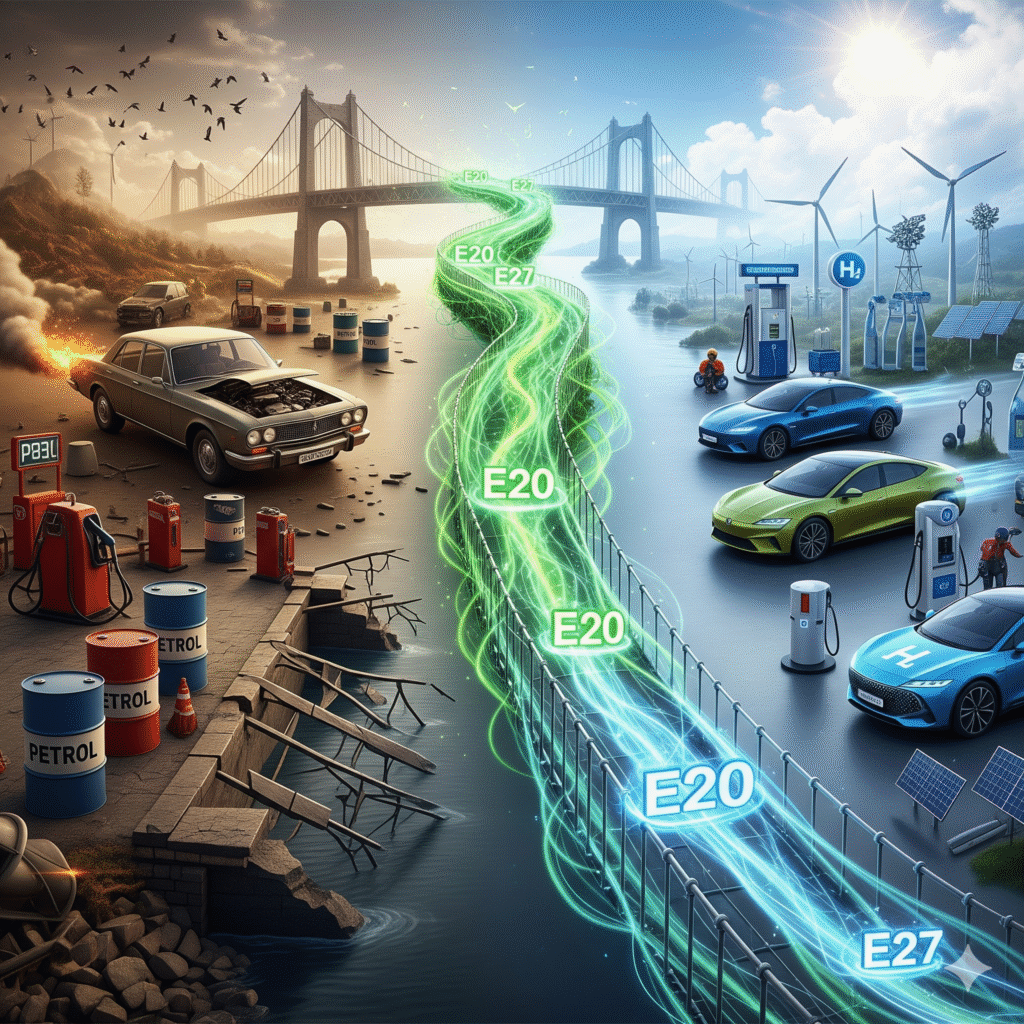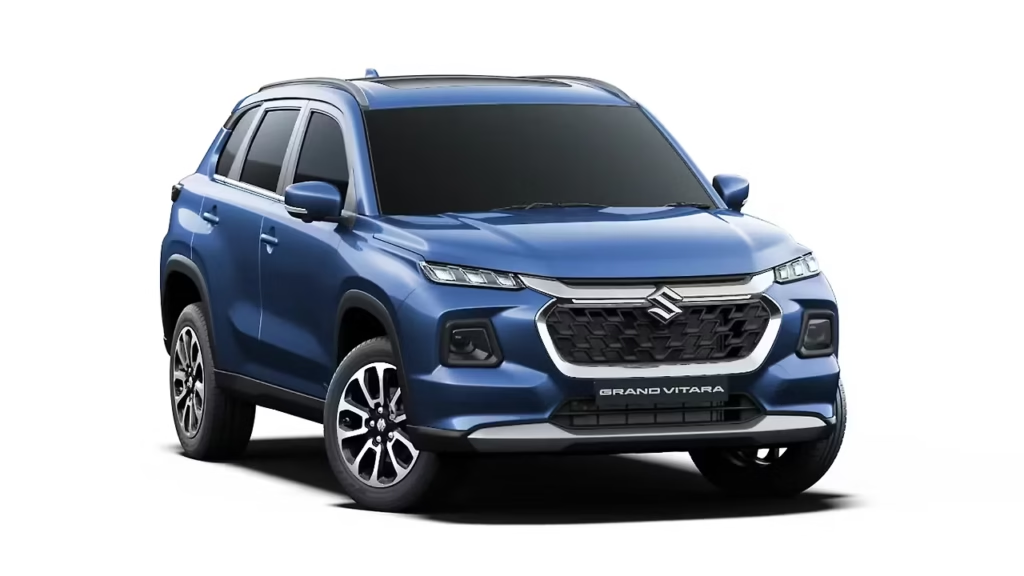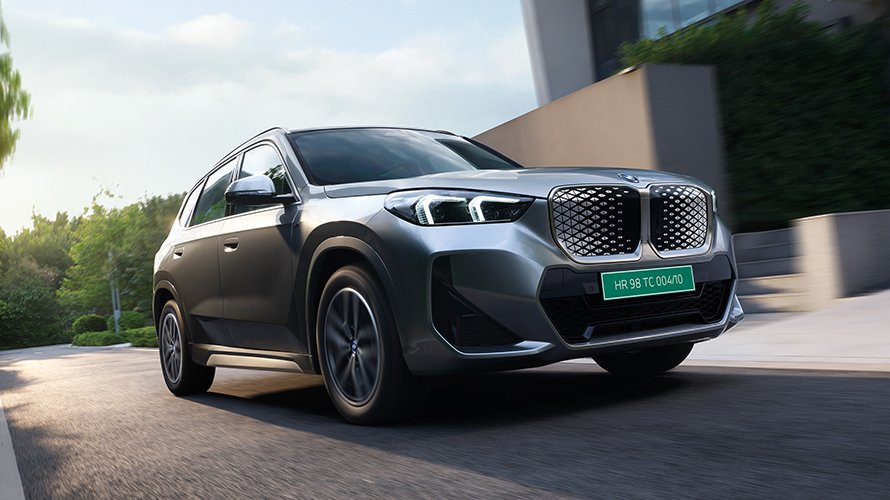India’s push towards greener mobility is accelerating, with the government mandating a transition to higher ethanol-blended fuels as part of its broader strategy to reduce oil imports and curb emissions. By 2025, E20 fuel (20% ethanol blended with 80% petrol) has become mandatory across the nation, and plans for E27 (27% ethanol) are already in the pipeline, potentially rolling out by 2028-2030. While these blends promise environmental benefits and energy security, they pose significant risks to the longevity of petrol engines, especially for Indian car owners who treat their vehicles as long-term investments—aiming for 15 years or more of reliable service.
For those averse to frequent upgrades, this shift could render traditional petrol cars obsolete prematurely. In this article, we explore the challenges of ethanol fuels on engine life and why investing in electric vehicles (EVs) or emerging hydrogen hybrid cars might be the wiser choice for sustainable, hassle-free ownership.
India’s ethanol blending program, launched under the National Policy on Biofuels (2018) and accelerated by the Ethanol Blended Petrol Programme, has seen remarkable progress. As of 2025, the country has achieved over 20% blending nationwide, surpassing the initial E20 target set for 2025. This is a leap from the earlier E10 standard, driven by abundant sugarcane-based ethanol production and government incentives. The Petroleum Ministry has outlined a roadmap to E27 by 2030, with interim targets like E25 by 2027, to cut crude oil imports by 20-30% and lower carbon emissions.
For consumers, this means petrol pumps are phasing out pure petrol, with E20 now the norm. However, this “green” fuel isn’t without controversy. While it burns cleaner in terms of CO2, higher ethanol content introduces corrosive properties that can degrade engine components over time. For short-term users, the impact might be negligible, but for those planning to keep their cars for 15 years—as is common in India, where vehicles often clock 200,000+ km—this could spell trouble.
How E20 and E27 Threaten Petrol Engine Longevity
Ethanol is hygroscopic (absorbs water from the atmosphere) and has a lower energy density than pure petrol, leading to several mechanical issues. While modern engines (post-2020 BS-VI compliant) are designed to handle E10 or E15, the jump to E20 and beyond requires specific adaptations like corrosion-resistant materials, upgraded fuel lines, and recalibrated ECUs. Many older petrol cars, and even some newer ones not fully optimized, will suffer accelerated wear. Here’s why E20 and E27 could make achieving a 15-year engine life “impossible” without major interventions:
- Corrosion and Material Degradation: Ethanol attracts moisture, forming a corrosive mixture that attacks rubber seals, gaskets, fuel injectors, and metal parts in the fuel system. In E20, this effect is moderate, but E27 amplifies it, potentially causing leaks and failures within 5-7 years. A study by the Society of Automotive Engineers (SAE) notes that ethanol blends above 15% can reduce fuel system lifespan by 30-50% in non-compatible engines. For Indian roads, where humid climates and poor fuel quality exacerbate issues, this means frequent repairs—costing ₹50,000-₹1 lakh per incident.
- Phase Separation and Water Contamination: Higher blends separate into layers when water accumulates (e.g., from condensation in the tank), leading to “lean” running conditions. This causes engine knocking, misfires, and overheating, which erode piston rings and valves over time. In long-term ownership, this could halve engine life from the typical 2-3 lakh km to under 1.5 lakh km, especially in stop-go city traffic where fuel sits longer.
- Reduced Lubricity and Increased Wear: Ethanol lacks the natural lubricants in petrol, accelerating wear on fuel pumps and injectors. Combined with its 30% lower energy content, engines must work harder for the same power, increasing heat and friction. Real-world tests by the Automotive Research Association of India (ARAI) show E20 reduces fuel efficiency by 3-5%, and E27 could push it to 7-10%, leading to higher operating temperatures that degrade oil faster and shorten overhaul intervals from 10 years to 5-7.
- Impact on Older Vehicles and Compatibility: Over 70% of India’s 300 million+ vehicles are pre-2020 models not certified for E20. Retrofitting (e.g., stainless steel lines) costs ₹20,000-₹40,000, but for E27, full engine redesigns may be needed. Insurers like ICICI Lombard have already noted rising claims for fuel-system failures post-E20 rollout, with repair costs up 20% year-on-year.
In essence, while E20 might shave 2-3 years off a well-maintained engine’s life, E27 could make 15-year ownership a nightmare, turning a ₹10-15 lakh investment into a money pit. For families relying on one car for generations, this mandates proactive change.
If you’re an Indian buyer who values longevity over frequent swaps, ditching petrol for EVs or hydrogen hybrids isn’t just eco-friendly—it’s economically savvy. With battery prices plummeting 80% since 2010 and government subsidies under FAME-III (up to ₹1.5 lakh), these alternatives offer lower total ownership costs (TCO) over 15 years.
Let’s compare:
Electric Vehicles (EVs): The Proven Long-Term Winner
India’s EV market is booming, with sales projected to hit 10 million units annually by 2030. Models like the Tata Nexon EV, MG ZS EV, or upcoming Hyundai Creta EV promise 400-500 km range and minimal maintenance.
- Engine Life Equivalent: EV “engines” (motors) last 20+ years with proper care, far outpacing petrol. Batteries are warrantied for 8-10 years/1.6 lakh km (e.g., Tata’s lifetime battery warranty for first owners), retaining 70-80% capacity after 15 years. No corrosion worries—EVs are immune to fuel blends.
- Cost Savings: Running costs are ₹1-2/km vs. ₹5-7/km for E20 petrol (factoring 10-15% efficiency loss). Over 15 years/2 lakh km, save ₹6-8 lakh on fuel alone. Maintenance? Just ₹5,000-10,000/year vs. ₹20,000+ for petrol. TCO for a ₹15 lakh EV like Nexon EV: ₹25-30 lakh over 15 years; equivalent petrol car with ethanol issues: ₹40+ lakh including repairs.
- India-Specific Perks: Nationwide charging network (10,000+ stations by 2025), tax exemptions, and resale value retention (EVs depreciate 20-30% less than ICE over 10 years). For long-term owners, home solar integration could make running costs near-zero.
Drawbacks like charging time are easing with 150 kW fast chargers, and for rural users, portable setups work well.
Hydrogen Hybrids: The Emerging Eco-Champion
Hydrogen fuel cell vehicles (FCEVs) or hydrogen hybrids (petrol/hydrogen dual-fuel) are nascent in India but gaining traction via pilots in Delhi and Gujarat. Toyota’s Mirai and Hyundai’s Nexo are global benchmarks, with India eye ing imports and local production by 2027 under the National Hydrogen Mission (₹20,000 crore investment).
- Longevity Edge: Fuel cells last 15-20 years (500,000+ km), with no moving parts like pistons—immune to ethanol corrosion. Hybrids like Honda’s CR-V Hydrogen (if adapted) blend hydrogen with minimal petrol, avoiding full ethanol reliance. In tests, hydrogen engines show 50% less wear than petrol.
- Benefits for 15-Year Owners: Refueling in 3-5 minutes (like petrol), zero tailpipe emissions, and efficiency of 60-70 km/kg H2 (₹300-400/kg vs. petrol’s ₹100/liter). Over 15 years, TCO could match EVs at ₹25-35 lakh, with lower upfront costs for hybrids (₹20-25 lakh expected). No battery degradation worries—hydrogen infrastructure is expanding, with 50+ stations planned by 2030.
- India’s Hydrogen Push: Government subsidies (up to 40% for FCEVs) and partnerships (e.g., NTPC’s green hydrogen plants) make it viable. For those in metros, it’s a seamless transition; hybrids offer a buffer against fuel volatility.
Compared to petrol, both EVs and hydrogen hybrids eliminate fuel-related degradation, ensuring your car lasts the full 15 years with 80-90% original performance.
As E20 becomes reality and E27 looms, petrol cars face a ticking clock on engine life, potentially forcing costly overhauls or early trade-ins for long-term owners. With India’s EV sales up 50% YoY and hydrogen tech on the horizon, investing in these alternatives is not just wise—it’s essential for financial and environmental sustainability. For the average Indian family eyeing 15 years of service, an EV like the Nexon offers unbeatable TCO and peace of mind, while hydrogen hybrids provide a futuristic bridge. Consult dealers for test drives, factor in subsidies, and future-proof your garage before ethanol takes its toll. The road to green mobility is electrifying—literally.



